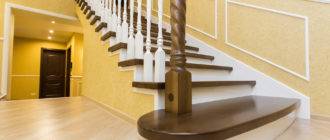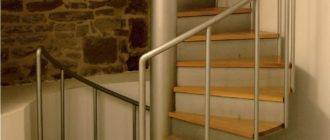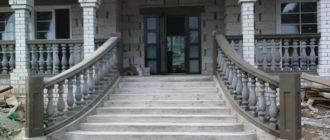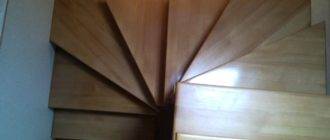Thinking about creating a staircase for your home, the first step is to familiarize yourself with the general characteristics of this product. Our article will help you find out about the main elements of stairs and their design solutions.

Types of stairs
The use of certain types of elements is largely due to the type of staircase.
It may be as follows:
- screw - this type is used quite rarely and, mainly, in conditions of limited space... But, on the other hand, it can be done for aesthetic reasons as well. After all, this product has an elegant appearance. Such a staircase is difficult to manufacture, expensive and, in addition, not very functional - for example, it will not be possible to lift furniture along it;
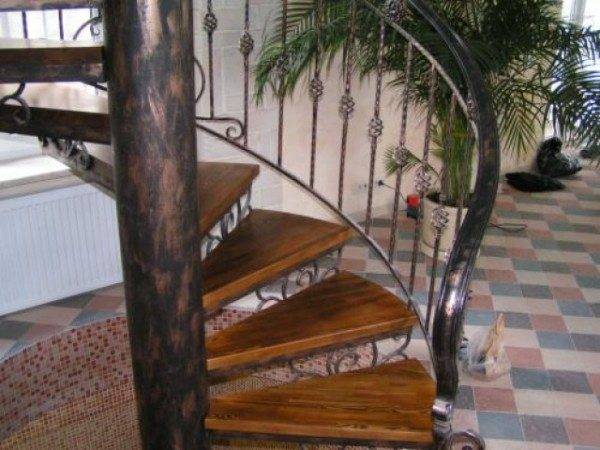
- marching - the most common type of construction... It consists of marches - a set of steps connected to each other. May have one or more landings.
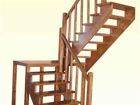
Marching structures are easier to manufacture. And, accordingly, their price is lower. But they take up much more space than the first type.
Most often they are made in the form of two-flight swing stairs. Moreover, they have one landing. And their rotation is from 90º to 180º.
You need to choose the type that is suitable for your case based on the parameters of the available free space. It is also worth considering the convenience of using the future product and its ability to fit into the existing interior.
General design characteristics
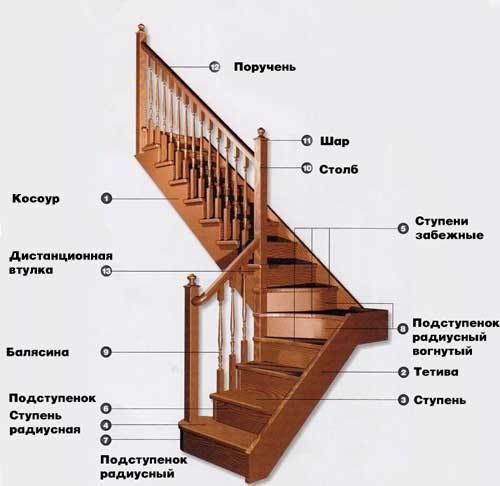
Now let's define the structural components of the stairs.
They are represented by the following elements:
- steps - consist of a tread and a riser. The first part is the top, the second is the side;
- support beams - can be in the form of a stringer, a bowstring or a central post. Kosour is an inclined beam on which steps are attached from above. The bowstring is in many ways similar to the above type, but the steps are attached to it, inserted into the grooves. Central post - consists of crimp pipes and sleeves, used in screw structures;
- railings - these staircase elements consist of a handrail and balusters. The first of these parts is on top, the second support it. A widespread option is a metal fence with a wooden or PVC handrail. Such products are durable and pleasant to the touch.
In addition to these elements, the structure may include bolts. This is the name of the large bolts that hold the steps together. Their use creates an additional load on the fence.
Ladders with bolts can be composed of a stringer or bowstring. In this case, one side is attached to the bolt, and the other - to the support beams in the form of a bowstring or stringer.
But there may not be beams. In this case, the other side is fixed directly to the wall.
Materials for stair elements
When planning the creation of a staircase, you will have to decide on the material from which it will be made. The choice is quite wide.
It can be wood, metal, as well as concrete or even glass. The following constructive solution is often used.
The supporting elements are made of stainless steel and wood is used for the finishing. The wood species used are larch, birch, ash, beech or oak.
Almost all ladder accessories can be made by hand. But, for this you will have to spend a lot of time and effort. Therefore, if possible, it is better to purchase a finished product that will be delivered to the house disassembled.
Advice! When buying ready-made elements, pay attention not only to the species, but also to the condition of the wood. This is especially true when goods are purchased that have a low value.
It often happens that they are made from undried solid wood. As a result, over time, such elements dry out and lose their shape, and the stairs begin to creak.
Forged products are distinguished by special grace. The combination of wooden railings and beautiful forging pattern makes the interior more respectable. The ornament made in the form of flowers and leaves looks especially impressive.
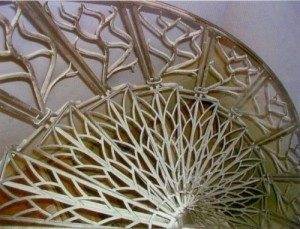
Forged elements for stairs have another advantage. They can be installed where other fences would look unnecessarily cumbersome. In addition, such components can be installed in places where the installation of other products is significant.
The disadvantages of elements made of such material include, first of all, their high cost. To this you can add the impossibility of making them at home.
This is due to the need to use special equipment - a forge and a pneumatic hammer. In addition, specialized skills and relevant work experience are required. Only then can you get a quality product that will delight the eye with its beauty.
Characteristics of individual elements
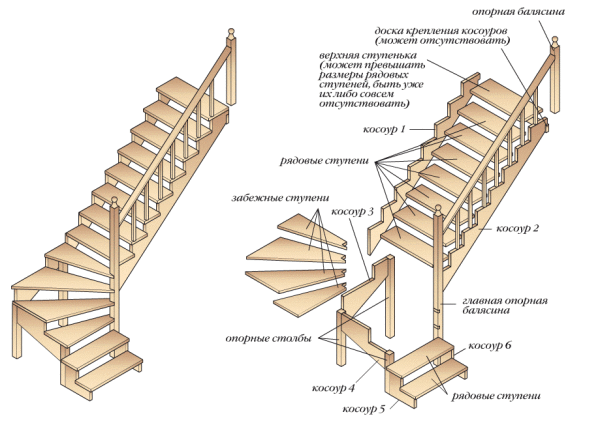
Steps
These are the main constituent elements of the entire structure. The very first of these is called the lower frieze stage.
The latter is called the upper frieze. It is the highest point of the flight of stairs, at which it connects to the landing.
Such ready-made elements for stairs can be divided into the following types:
- having or not having a profile protrusion;
- elements with a through arrangement;
- type "goose step"
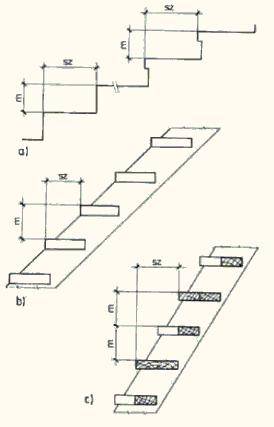
Railings
Safe use of stairs is impossible without the use of fences. Railings play their role.
Usually they are made in height from 90 to 110 centimeters. For convenience, they must be equipped with a handrail located on top.
Like all other elements, fences can be made from a variety of materials. They can also be solid or through.
The first type is currently used quite rarely. It is mainly used for porch or outdoor stairs.
Railings, which are ready-made elements of the stairs, can be very diverse in their design. These are both straight-line patterns, which were popular in the past, and modern arched and curved versions. Wooden models are also very interesting.
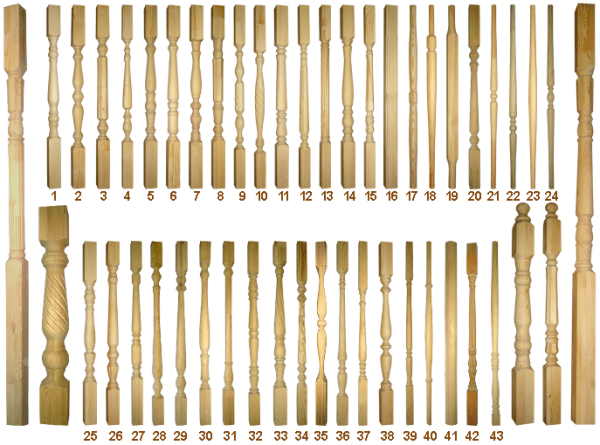
The use of the latter of them allows you to find rather interesting design solutions. The color in which our product will be painted is also important. The abundance of modern paints and varnishes allows you to choose any shade required for your interior.
Modular stairs
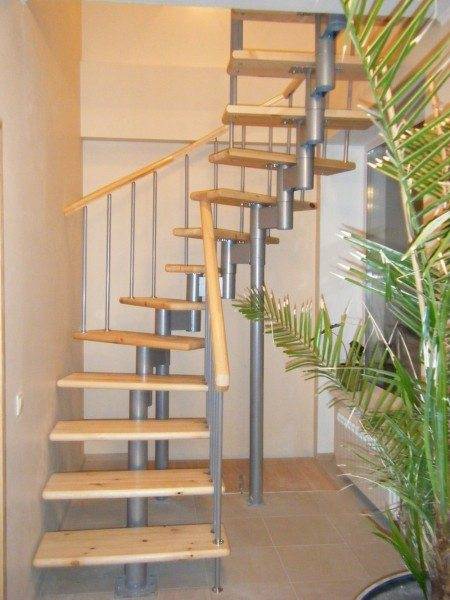
If you do not want to engage in the manufacture of staircase elements, you should pay attention to modular stairs. This is a good option for a private home. Especially when you consider the fact that all the assembly work can be done personally.
This product consists of modules assembled like a constructor. Therefore, installation in this case does not present any difficulties.
At first glance, such a staircase seems airy and unreliable. But this is not true.
Here, a special technology is used for the manufacture of steps. It allows you to make the resulting segments more durable and wear-resistant. And this extends their service life.
The load-bearing elements of modular stairs are made of metal, which undoubtedly contributes to an increase in the strength of this product. The fasteners of the parts ensure their reliable fixation.
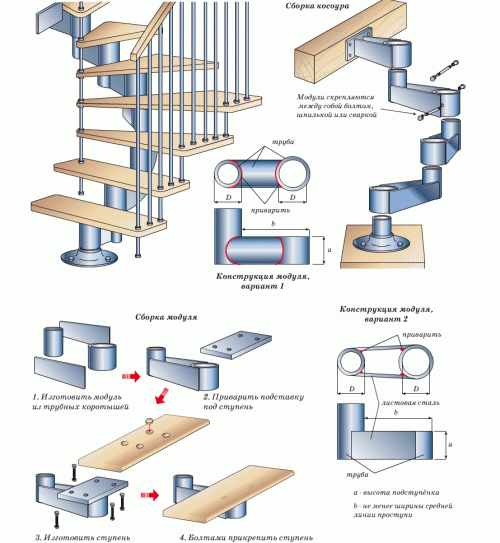
In case of unwillingness or inability to engage in the independent manufacture of this design, it is worth purchasing a modular product. It has a modern design, is compact and easy to assemble. It is unlikely that even instructions will be required for its installation.
In the video presented in this article, you will find additional information about the elements of stairs.

